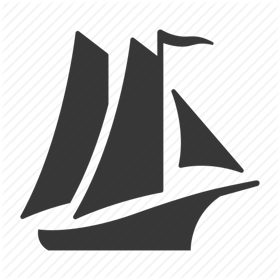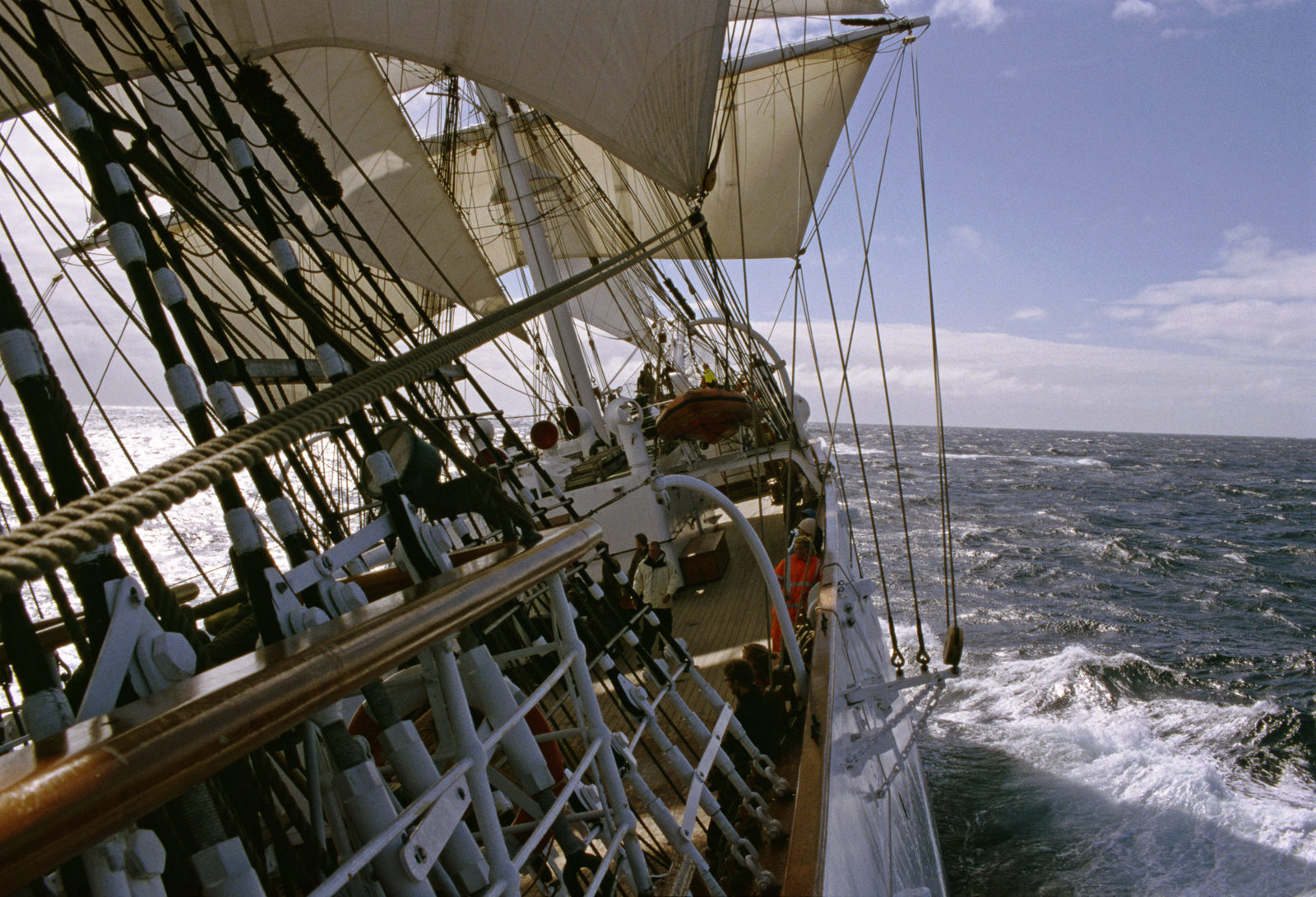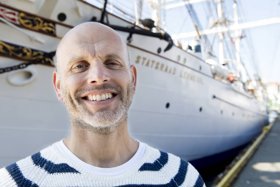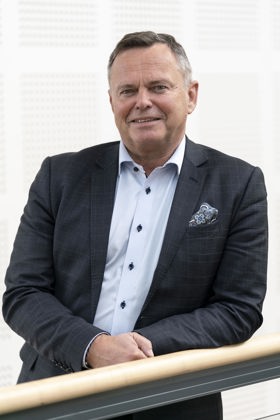
Exploring an ocean of knowledge
It’s said that we know more about the surface of the moon than we know about our oceans. But with support from Kongsberg Maritime, tall ship Statsraad Lehmkuhl is preparing to start our learning journey.
-
Text:Marketing & Communication Department
Photo:@ STATSRAAD LEHMKUHL @ Jesper Rosenmai @Richard Sibley
-
Gunvor Hatling MidtbøVice President, Communications
Statsraad Lehmkuhl was built to teach. Originally created in 1914 as a training ship for the German merchant navy, she was purchased in 1923 by the Norwegian Shipowners Association and transferred to the Bergen School Ship Foundation the following year.
Today she’s maintained and operated by the Statsraad Lehmkuhl Foundation, and her mission to share knowledge and experience is ongoing. “Statsraad Lehmkuhl has been educating people for more than 100 years,” says Haakon Vatle, CEO of the Statsraad Lehmkuhl Foundation.

“Now we’re extending that education from sailing to science. Our goal is to build and share new knowledge about the ocean.”
The ship, a three-masted steel barque, is preparing for the greatest challenge she’s ever had to face – a 19-month circumnavigation of the globe known as the One Ocean expedition.
The voyage, which begins in September 2021, is an official part of the UN’s Decade of Ocean Science for Sustainable Development, an initiative to create a common framework in which ocean scientists can study, understand and reverse the cycle of decline in ocean health around the world.

Sustainable sailing supported by technology
“Our involvement with the ship goes back to the early 80s,” says Yrjar Garshol, Vice President of Kongsberg Marketing. “At that time she was in very poor condition, and the Statsraad Lehmkuhl Foundation had just begun work to restore her.
“Bergen Engines, at that time part of Rolls-Royce Commercial Marine Operations, which later became part of Kongsberg, supplied a new engine. From then on we became an important part of the Foundation, and have been providing servicing, parts and equipment for many years now.”
Today the ship features power, energy management, navigation and communication systems from Kongsberg Maritime. She’s also equipped with a brand-new innovation – a hybrid generator, which works by running the propeller backwards while the ship is under sail, providing enough power to recharge the 370 kwh battery bank.

Haakon Vatle, CEO of the Statsraad Lehmkuhl Foundation.
The new technology means, in theory, that the ship can sail for weeks at a time without using engines, significantly reducing emissions, energy consumption and noise. The One Ocean expedition will deliver vital data on the generator system, as well as on the oceans.
“Statsraad Lehmkuhl is almost a Kongsberg ship,” says Haakon Vatle. “We have been working with Kongsberg Maritime for many years, so they are a natural partner for this venture. Plus we share the same vision — to generate awareness about our oceans and to use the knowledge we gather to build a better world.”
SUPPLYING THE SCIENCE
The purpose of the One Ocean expedition is to create awareness and knowledge of our oceans. Kongsberg’s contribution includes both scientific sensors that support the research teams, and a brand new cloud-based data delivery solution, which delivers the scientific findings in real time.
“We were invited to contribute to the scientific equipment by the Institute for Marine Research [IMR],” says Tonny Algrøy, Kongsberg’s Sales Director Underwater Science. “The department I work in is very much focused on ocean knowledge, and we’ve been working with the institute for a very long time.
“The main part of our delivery on this expedition is the EK80 scientific echosounder, an instrument used worldwide to quantify and help to manage life in the oceans. We’ve also provided meteorological sensors, whose data will be used to improve weather forecasting at sea.”
Kongsberg’s contribution will be complemented by other measurement systems, like a FerryBox for different surface water parameters, a CO2 measuring system and an instrument for measuring wave height.
They’ve been provided by additional One Ocean partners like the University of Bergen, the Institute of Marine Research and the Norwegian Meteorological Institute. The scientific measurements from these combined instruments will complement physical sampling by onboard scientists and crew.
“Bringing attention to the health of our oceans is crucial. This expedition will help to give life in and around the ocean the chance of a better future.” Haakon Vatle
“What’s especially interesting for us is that we’ve developed and introduced a cloud-based information management system that connects the data flows from the sensors and makes the data publicly available on a day to day basis,” says Tonny.
“It’s a new offering for us, and one we’ll be able to provide other customers. It’s a key element in developing and providing insight into and awareness of what’s going on with our oceans.”

“The real story here is about the oceans. While there’s real scientific collaboration going on with partners around the world, the key thing we all want to do is share the knowledge we gain.” Yrjar Garshol, VP Marketing
The system also ties in information from Vessel Insight, Kongsberg’s existing on-board digital ecosystem. As Yrjar explains, it’s used to report on the status of the vessel, the on-board equipment, how everything is performing and the kind of conditions the ship is facing. That information is sent to land-based observation posts around the world.
“All of that information is coming back in real time, and on this mission, it will be combined with the scientific measurements, and provided to all partners in the venture,” he says.




What that creates is a real-time, three-dimensional picture of what’s happening on the surface and below it in one simple to manage data block. Which enables not only vital research about the current state of the oceans, but accurate predictions about things like prevailing weather conditions, which are just as vital to the success of the mission.
“Without our ocean insight data management and communication systems, all partners would still receive all the data, but it would be considerably slower and less efficient,” says Tonny. “Our system simplifies access to, handling and analysis of the data, which leads to faster generation of information.
“When you’re talking about things like the weather forecast at sea, you need that information in real time. The crew don’t need to know what the weather was a week ago. They need to know what they’re sailing into.
“On land that’s relatively simple, because there are hundreds of thousands of data points. In the ocean there’s far less than that, so even creating only a few hundred data points helps a lot. That’s another part of our purpose on board.”
Focus on the future of our oceans
The real story here is about the oceans. It’s about how we tell the world what’s going on in our oceans, and how we create awareness and attention around the issues we need to face. While there’s real scientific collaboration going on with partners around the world, the key thing we all want to do is share the knowledge we gain.
Haakon Vatle agrees. “Bringing attention to the health of our oceans is crucial,” he says. “Norway is a nation with a long seagoing history and traditions. This expedition will help to give life in and around the ocean the chance of a better future.
“Statsraad Lehmkuhl represents both our past and the future, and we’re proud to be working with Kongsberg Maritime and all our other partners to help deliver it.”
We invite everyone to become "digital passengers" on this epic expedition to and follow us online through this website and our sosial media channels. Parts of the expedition will also be open for you to join on board with us!
Spoke at the World Meteorological Organization’s (WMO) first ever Data Conference in November 2020 about the company’s innovative approach to vessel-based meteorological and oceanographic data collection, highlighting Statsraad Lehmkuhl’s unique place as the first Vessel Insight customer.
His presentation can be viewed at the 1 hour 53 minute mark on this link: https://vimeo.com/480226742